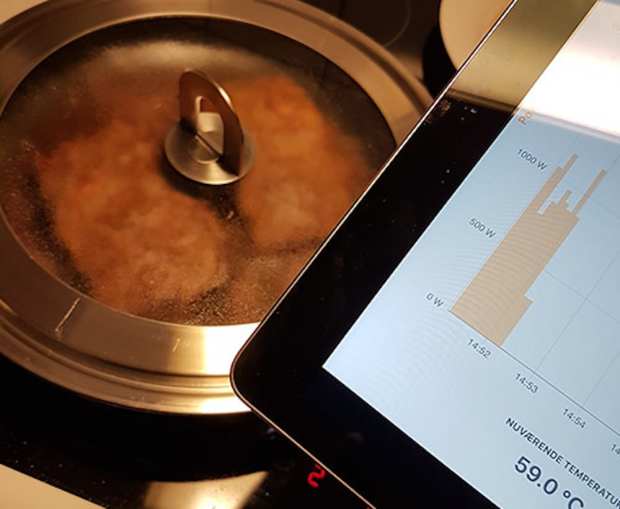How To Introduce The World To AI-Assisted Cooking

The wonders of AI and learning algorithms are often touted at length in the payments and commerce industry. With the transformative power of smart machines, the pitch goes, commerce can be faster, safer, smoother, more individualized and easier for everyone involved.
Still, there are some limits on what we think smart technology can do. The increasing population of people who own smart speakers, for example, have learned to make a wider variety of meals with an assist from Alexa or Google’s Assistant pulling up recipes in their kitchens. But there are very few people who expect that, past serving up the instructions, smart AI can help make anyone a better cook.
Well, at least there are very few people with that expectation today — the Danish team behind Ztove are hoping very much to change that perception in the future with a smart cook system designed to free the culinary genius hiding within each of us.
Ztove is the brainchild of Danish inventor and technologist Peter Favrholdt, who happened to also have a passion for cooking. The early days of designing the smart cooking system, he says, weren’t an attempt to make a commercial product. He was just looking for a way to prepare better food with less overall effort for his family. It is a story that comes up a lot in kitchen innovation — InstantPot has a similar origin story.
The system is essentially a three-part offering designed to allow better cooking by making it much, much easier to precisely control and maintain heating on a stovetop. To make that happen, the Ztove system connects a Bluetooth pan, an induction cooktop, and an app to orchestrate the cooking process. There are a few options for the pan, according to Favrholdt, including two intelligent pans and a large saucepan — as well as three different cooktops. On the cooktop side, consumers can choose between two models that are meant to be built into the countertop and one that can stand apart.
“For home use, most people want built-in smart induction cooktops,” he wrote. “Ztove currently has two models — a “normal” 24 inches and a “wide” 31 inches model, both with four cooking zones but having different width and arrangement of the burners.”
Ztove, to date, is a relatively small operation — though it has come quite far since its early days of showing off its prototype at industry shows a mere three years ago. After winning an industry competition, according to Favrholdt, the firm was able to pick up a few grants in its home country and enroll in the the Odense Robotics Startup Hub — an accelerator program for early startups in the field of robotics. After an infusion of funds in a 2018 seed round, the firm was able to both find a manufacturer for its parts and open a small factory in Denmark to do final assembly on the units.
Its retail footprint is still relatively small and largely confined to its home nation, as it only started shipping goods directly to consumers earlier this year — and mostly to early backers. More recently, Ztove started shipping its product through retail with Danish retailer Skousen and also through Denmark’s largest online retailer WhiteAway.
But the vision is bigger, and the goal is to bring the Ztove smart stove suite of good to the broader European market in the very near future. The firm recently got some support in that regard, care of an unspecified investment from Odense, a Denmark-based company that specializes in robotics.
“Odense has a long tradition in robotics, especially the kind that collaborate closely with humans,” Favrholdt told The Spoon. “I see Ztove in this sense.”
New funds in hand, Ztove has relocated itself into a larger office space, upped its inventory and manufacturing plans and started bulking up its employee roster in anticipation of its upcoming planned European expansion.
“We’ve been able to hire new employees: marketing, engineering and software developers,” said Favrholdt.
The goal, he noted, is simple — bring the product and what it can do into more consumers’ homes, and let the improvements it can make to the cooking experience speak for themselves. There are few consumers, he noted, that like fussing over a pan or to constantly be stirring to manually even out temperature. A pan that does its own thinking — and learns over time how to make a better crepe? It is something Favrholdt thinks will ultimately sell itself when the option is presented.
